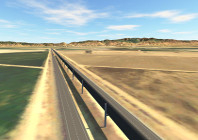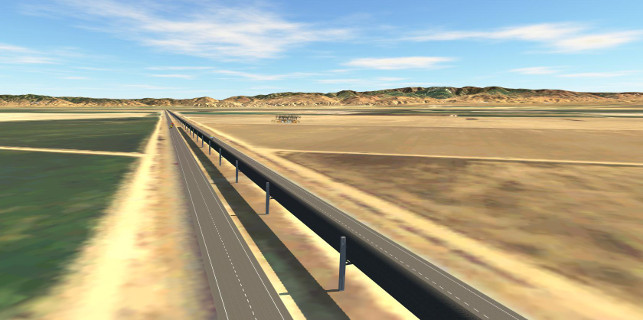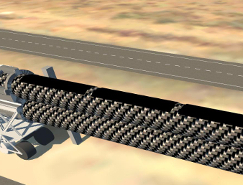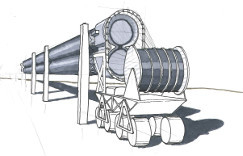The theoretical brief of Elon Musk’s super-fast Hyperloop transit system continues to gather real world intrigue and ideas, as people of all backgrounds try to conceptualise how it might work.

The vision of the founder and CEO of SpaceX and Tesla Motors, Musk’s idea to whizz passengers collectively at high speed between Los Angeles and San Francisco in a matter of minutes rather than hours has drawn all kinds of engineering input.
At the office of Autodesk’s Manufacturing 2020 team it was no different, and with all Autodesk’s technology arsenal to hand, they set about trying to realise at least a little part of Musk’s vision.
The team’s ‘Technology Futurist’ Jordan Brandt was excited by the challenge: “What Elon seemed to be soliciting was a crowd sourced concept, and we’ve already started working with some of the other individuals and companies that have responded to the Hyperloop concept to develop it further. “We’re not going to be able to do it all under one roof, and that’s definitely not the intent.”
Intelligent infrastructure
Autodesk’s approach has differed from every other concept so far, primarily as it has approached it from the point of infrastructure.
“I was thinking Elon has put a lot of energy into the capsule design, the actual passenger vehicle, and the physics of how this thing goes through a tube at 600 – 700mph,” extols Brandt.
“But one thing that was noticeably absent was there wasn’t a lot of creativity on the infrastructure and how that would be built.”
The proposal from the team was a continuously braided composite tube that would create the airtight, low-pressure atmosphere along the entire length. “I’ve worked a lot in composites and recently I’ve been using these bi-axially-braided tubes for some manufacturing, and that was the correlation that struck on ‘could we potentially scale up this process?’.
“What’s interesting is that you get all of these knock-on benefits of lighter-weight, higherstrength, but also continuous structure. “You have a vacuous atmosphere, which obviously eliminates the friction on the capsule flying through it, but If you’re building it out of sections of tube and welding that together in traditional means then you’re very prone to leaks.
“The idea of continuously braiding it would reduce the number of joints dramatically and makes maintenance a lot easier.” The increased scale pushed the team to develop concept composite braiding machines that would have to weave the entire structure onsite in once piece.
Cost savings
The Hyperloop’s ‘over-under’ design also forms an essential part of the concept infrastructure as a means of reducing the land acquisition, the largest cost to the project.
“If you can run it through the median of the highway you could dramatically reduce the amount of land that the state has to purchase,” says Brandt.
Brandt and the team had all of Autodesk’s tool set and knowledge at their disposal, leveraging the breadth of the company all the way from the mechanical design to the infrastructure design and rendering.
The initial concept models were developed in Fusion 360, before being given to different teams to complete various aspects.
The Infraworks 360 Pro team of civil infrastructure specialists assessed the optimal route it should take; renderings were produced in 3ds Max, which all combined produced an animation showing the tube
running along California’s I5 highway.
The composites analysis was done in Autodesk Simulation Composites, and all parts were linked using Autodesk’s cloud technologies.
“When you’re inviting people to review and collaborate it obviously makes that process a whole lot easier,” explains Brandt. “Even when you’re in the same company it’s nice to be able to link them into your project rather than sending them files.”
More than just an exercise in marketing by stretching its software muscles, the Manufacturing 2020 team is incredibly excited about bringing the Hyperloop concept to reality.
“If Elon is interested in soliciting more input then absolutely!” exclaims Brandt. “The more attention and participation it gets, the more likely that it will be built.”
Trend hunters
Autodesk’s 2020 team as a whole is charged with following trends and spotting them before they hit mainstream design, and how they will influence the way things are created
in the future.
“With a focus on manufacturing: ‘how are we going to design and make things in our future?’ That ranges from the kind of sci-fi epic view to the here-and-now, ‘what are we going to do in two years?’” concludes Brandt.
Where on that timeline the Hyperloop project fits in is anyone’s guess, but with shared enterprise of this scale, you wouldn’t doubt it being realised soon.
A look at Autodesk’s vision and involvement in the Hyperloop project
Default








